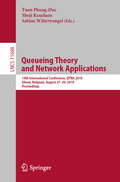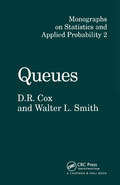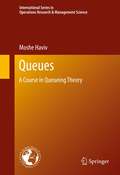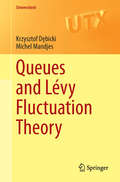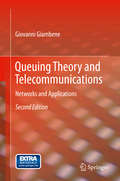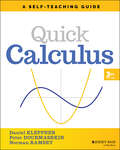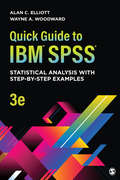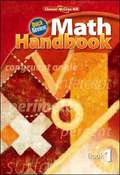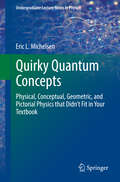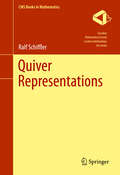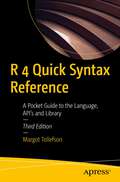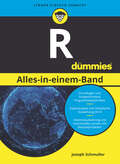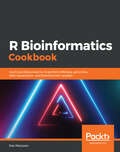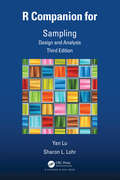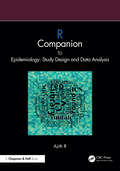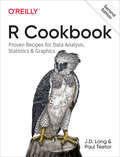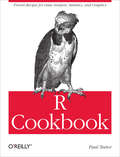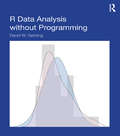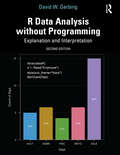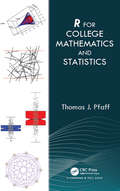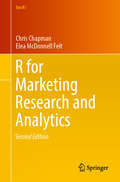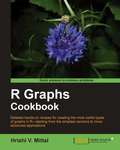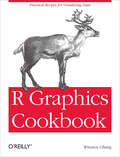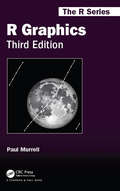- Table View
- List View
Queueing Theory and Network Applications: 14th International Conference, QTNA 2019, Ghent, Belgium, August 27–29, 2019, Proceedings (Lecture Notes in Computer Science #11688)
by Sabine Wittevrongel Tuan Phung-Duc Shoji KasaharaThis book constitutes the proceedings of the 14th International Conference on Queueing Theory and Network Applications, QTNA 2019, held in Ghent, Belgium, in August 2019.The 23 full papers included in this volume were carefully reviewed and selected from 49 initial submissions. The papers are organized in topical sections on Retrial Queues; Controllable Queues; Strategic Queues; Queueing Networks; Scheduling Policies; Multidimensional Systems; and Queueing Models in Applications.
Queues
by D.R. CoxThis is a classic book on Queues. First published in 1961 it is clearly and concisely introduces the theory of queueing systems and is still just as relevant today. The monograph is aimed at both students and operational research workers concerned with the practical investigations of queueing, although almost every statistician will find its contents of interest.
Queues
by Moshe HavivQueueing theory (the mathematical theory of waiting lines in all its configurations) continues to be a standard major area of operations research on the stochastic side. Therefore, universities with an active program in operations research sometimes will have an entire course devoted mainly or entirely to queueing theory, and the course is also taught in computer science, electrical engineering, mathematics, and industrial engineering programs. The basic course in queueing theory is often taught at first year graduate level, though can be taught at senior level undergraduate as well. This text evolved from the author's preferred syllabus for teaching the course, presenting the material in a more logical order than other texts and so being more effective in teaching the basics of queueing theory. The first three chapters focus on the needed preliminaries, including exposition distributions, Poisson processes and generating functions, renewal theory, and Markov chains, Then, rather than switching to first-come first-served memoryless queues here as most texts do, Haviv discusses the M/G/1 model instead of the M/M/1, and then covers priority queues. Later chapters cover the G/M/1 model, thirteen examples of continuous-time Markov processes, open networks of memoryless queues and closed networks, queueing regimes with insensitive parameters, and then concludes with two-dimensional queueing models which are quasi birth and death processes. Each chapter ends with exercises.
Queues and Lévy Fluctuation Theory
by Krzysztof Dębicki Michel MandjesThe book provides an extensive introduction to queueing models driven by Lévy-processes as well as a systematic account of the literature on Lévy-driven queues. The objective is to make the reader familiar with the wide set of probabilistic techniques that have been developed over the past decades, including transform-based techniques, martingales, rate-conservation arguments, change-of-measure, importance sampling, and large deviations. On the application side, it demonstrates how Lévy traffic models arise when modelling current queueing-type systems (as communication networks) and includes applications to finance. Queues and Lévy Fluctuation Theory will appeal to postgraduate students and researchers in mathematics, computer science, and electrical engineering. Basic prerequisites are probability theory and stochastic processes.
Queuing Theory and Telecommunications
by Giovanni GiambeneThis book is aimed to provide a basic description of current networking technologies and protocols as well as to provide important tools for network performance analysis based on queuing theory. The second edition adds selected contents in the first part of the book for what concerns: (i) the token bucket regulator and traffic shaping issues; (ii) the TCP protocol congestion control that has a significant part in current networking; (iii) basic satellite networking issues; (iv) adding details on QoS support in IP networks. The book is organized so that we have first networking technologies and protocols (Part I) and then theory and exercises with applications to the different technologies and protocols (Part II). This book is intended as a textbook for master level courses in networking and telecommunications sectors.
Quick Calculus: A Self-Teaching Guide (Wiley Self-Teaching Guides)
by Daniel Kleppner Peter Dourmashkin Norman RamseyDiscover an accessible and easy-to-use guide to calculus fundamentals In Quick Calculus: A Self-Teaching Guide, 3rd Edition, a team of expert MIT educators delivers a hands-on and practical handbook to essential calculus concepts and terms. The author explores calculus techniques and applications, showing readers how to immediately implement the concepts discussed within to help solve real-world problems. In the book, readers will find: An accessible introduction to the basics of differential and integral calculus An interactive self-teaching guide that offers frequent questions and practice problems with solutions. A format that enables them to monitor their progress and gauge their knowledge This latest edition provides new sections, rewritten introductions, and worked examples that demonstrate how to apply calculus concepts to problems in physics, health sciences, engineering, statistics, and other core sciences. Quick Calculus: A Self-Teaching Guide, 3rd Edition is an invaluable resource for students and lifelong learners hoping to strengthen their foundations in calculus.
Quick Guide to IBM® SPSS®: Statistical Analysis With Step-by-Step Examples
by Alan C. Elliott Wayne A. WoodwardA perfect supplement for an introductory statics course. Quick Guide to IBM® SPSS®: Statistical Analysis With Step-by-Step Examples gives students the extra guidance with SPSS they need without taking up valuable in-class time. A practical, accessible guide for using software while doing data analysis in the social sciences, students can learn SPSS on their own, allowing instructors to focus on the concepts and calculations in their lectures, rather than SPSS tutorials. Designed to work across disciplines, the authors have provided a number of SPSS "step-by-step" examples in chapters showing the user how to plan a study, prepare data for analysis, perform the analysis and interpret the output from SPSS. The new Third Edition covers IBM® SPSS® version 25, includes a new section on Syntax, and all chapters have been updated to reflect current menu options along with many SPSS screenshots, making the process much simpler for the user. In addition, helpful hints and insights are provided through the features "Tips and Caveats" and "Sidebars."
Quick Guide to IBM® SPSS®: Statistical Analysis With Step-by-Step Examples
by Alan C. Elliott Wayne A. WoodwardA perfect supplement for an introductory statics course. Quick Guide to IBM® SPSS®: Statistical Analysis With Step-by-Step Examples gives students the extra guidance with SPSS they need without taking up valuable in-class time. A practical, accessible guide for using software while doing data analysis in the social sciences, students can learn SPSS on their own, allowing instructors to focus on the concepts and calculations in their lectures, rather than SPSS tutorials. Designed to work across disciplines, the authors have provided a number of SPSS "step-by-step" examples in chapters showing the user how to plan a study, prepare data for analysis, perform the analysis and interpret the output from SPSS. The new Third Edition covers IBM® SPSS® version 25, includes a new section on Syntax, and all chapters have been updated to reflect current menu options along with many SPSS screenshots, making the process much simpler for the user. In addition, helpful hints and insights are provided through the features "Tips and Caveats" and "Sidebars."
Quick Review Math Handbook Book 1
by Mcgraw-Hill StaffA handbook used to refresh your memory of mathematics concepts and skills.
Quirky Quantum Concepts
by Eric L. MichelsenQuirky Quantum Concepts explains the more important and more difficult concepts in theoretical quantum mechanics, especially those which are consistently neglected or confusing in many common expositions. The emphasis is on physical understanding, which is necessary for the development of new, cutting edge science. In particular, this book explains the basis for many standard quantum methods, which are too often presented without sufficient motivation or interpretation. The book is not a simplification or popularization: it is real science for real scientists. Physics includes math, and this book does not shy away from it, but neither does it hide behind it. Without conceptual understanding, math is gibberish. The discussions here provide the experimental and theoretical reasoning behind some of the great discoveries, so the reader may see how discoveries arise from a rational process of thinking, a process which Quirky Quantum Concepts makes accessible to its readers. Quirky Quantum Concepts is therefore a supplement to almost any existing quantum mechanics text. Students and scientists will appreciate the combination of conversational style, which promotes understanding, with thorough scientific accuracy.
Quiver Representations
by Ralf SchifflerThis book is intended to serve as a textbook for a course in Representation Theory of Algebras at the beginning graduate level. The text has two parts. In Part I, the theory is studied in an elementary way using quivers and their representations. This is a very hands-on approach and requires only basic knowledge of linear algebra. The main tool for describing the representation theory of a finite-dimensional algebra is its Auslander-Reiten quiver, and the text introduces these quivers as early as possible. Part II then uses the language of algebras and modules to build on the material developed before. The equivalence of the two approaches is proved in the text. The last chapter gives a proof of Gabriel's Theorem. The language of category theory is developed along the way as needed.
R 4 Quick Syntax Reference: A Pocket Guide to the Language, API's and Library
by Margot TollefsonThis handy reference book detailing the intricacies of R covers version 4.x features, including numerous and significant changes to syntax, strings, reference counting, grid units, and more.Starting with the basic structure of R, the book takes you on a journey through the terminology used in R and the syntax required to make R work. You will find looking up the correct form for an expression quick and easy. Some of the new material includes information on RStudio, S4 syntax, working with character strings, and an example using the Twitter API.With a copy of the R 4 Quick Syntax Reference in hand, you will find that you are able to use the multitude of functions available in R and are even able to write your own functions to explore and analyze data.What You Will LearnDiscover the modes and classes of R objects and how to use themUse both packaged and user-created functions in R Import/export data and create new data objects in RCreate descriptive functions and manipulate objects in RTake advantage of flow control and conditional statementsWork with packages such as base, stats, and graphicsWho This Book Is ForThose with programming experience, either new to R, or those with at least some exposure to R but who are new to the latest version.
R Alles-in-einem-Band für Dummies (Für Dummies)
by Joseph SchmullerWenn Sie R von Grund auf kennenlernen und auch die fortgeschrittenen Techniken zur Lösung gängiger Aufgaben bei der Datenanalyse mit R beherrschen möchten, dann liegen Sie mit diesem Buch goldrichtig. Es bietet Ihnen nicht nur einen Überblick über die Programmierung in R und die Arbeit mit der Sprache, sondern geht auch auf die Arten von Projekten und Anwendungen ein, die R-Entwicklerinnen und -Entwickler häufig in Angriff nehmen müssen. Statistische Analysen, Datenvisualisierungen, maschinelles Lernen und Datenmanagement mit R: All das lernen Sie mit diesem Buch intensiv kennen.
R Bioinformatics Cookbook: Use R and Bioconductor to perform RNAseq, genomics, data visualization, and bioinformatic analysis
by Dan MacLeanOver 60 recipes to model and handle real-life biological data using modern libraries from the R ecosystem Key Features Apply modern R packages to handle biological data using real-world examples Represent biological data with advanced visualizations suitable for research and publications Handle real-world problems in bioinformatics such as next-generation sequencing, metagenomics, and automating analyses Book Description Handling biological data effectively requires an in-depth knowledge of machine learning techniques and computational skills, along with an understanding of how to use tools such as edgeR and DESeq. With the R Bioinformatics Cookbook, you'll explore all this and more, tackling common and not-so-common challenges in the bioinformatics domain using real-world examples. This book will use a recipe-based approach to show you how to perform practical research and analysis in computational biology with R. You will learn how to effectively analyze your data with the latest tools in Bioconductor, ggplot, and tidyverse. The book will guide you through the essential tools in Bioconductor to help you understand and carry out protocols in RNAseq, phylogenetics, genomics, and sequence analysis. As you progress, you will get up to speed with how machine learning techniques can be used in the bioinformatics domain. You will gradually develop key computational skills such as creating reusable workflows in R Markdown and packages for code reuse. By the end of this book, you'll have gained a solid understanding of the most important and widely used techniques in bioinformatic analysis and the tools you need to work with real biological data. What you will learn Employ Bioconductor to determine differential expressions in RNAseq data Run SAMtools and develop pipelines to find single nucleotide polymorphisms (SNPs) and Indels Use ggplot to create and annotate a range of visualizations Query external databases with Ensembl to find functional genomics information Execute large-scale multiple sequence alignment with DECIPHER to perform comparative genomics Use d3.js and Plotly to create dynamic and interactive web graphics Use k-nearest neighbors, support vector machines and random forests to find groups and classify data Who this book is for This book is for bioinformaticians, data analysts, researchers, and R developers who want to address intermediate-to-advanced biological and bioinformatics problems by learning through a recipe-based approach. Working knowledge of R programming language and basic knowledge of bioinformatics are prerequisites.
R Companion for Sampling: Design and Analysis, Third Edition
by Yan Lu Sharon L. LohrThe R Companion for Sampling: Design and Analysis, designed to be read alongside Sampling: Design and Analysis, Third Edition by Sharon L. Lohr (SDA; 2022, CRC Press), shows how to use functions in base R and contributed packages to perform calculations for the examples in SDA. No prior experience with R is needed. Chapter 1 tells you how to obtain R and RStudio, introduces basic features of the R statistical software environment, and helps you get started with analyzing data. Each subsequent chapter provides step-by-step guidance for working through the data examples in the corresponding chapter of SDA, with code, output, and interpretation. Tips and warnings help you develop good programming practices and avoid common survey data analysis errors. R features and functions are introduced as they are needed so you can see how each type of sample is selected and analyzed. Each chapter builds on the knowledge developed earlier for simpler designs; after finishing the book, you will know how to use R to select and analyze almost any type of probability sample. All R code and data sets used in this book are available online to help you develop your skills analyzing survey data from social and public opinion research, public health, crime, education, business, agriculture, and ecology.
R Companion to Epidemiology: Study Design and Data Analysis
by Ajith RR Companion to Epidemiology: Study Design and Data Analysis is a companion volume to the classic textbook by Mark Woodward, Epidemiology: Study Design and Data Analysis, Third Edition. It aims to equip the reader with sufficient knowledge to use R for practising epidemiology. Towards this aim, it reworks the examples in the textbook, presenting the code followed by an explanation and its result.Key Features: Almost all of the numerical examples in the textbook are reworked in R R code is introduced in small portions and explained thoroughly Complexity of introduced code is increased only gradually More than 300 commands spanning more than 40 libraries are introduced The book is intended primarily to be used as a supplement to the textbook by undergraduate and graduate students in the fields of epidemiology and statistics. It will also serve practitioners and researchers in epidemiology who want to learn R for use in their work.
R Cookbook: Proven Recipes for Data Analysis, Statistics, and Graphics (Cookbook Ser.)
by Paul Teetor Jd LongPerform data analysis with R quickly and efficiently with more than 275 practical recipes in this expanded second edition. The R language provides everything you need to do statistical work, but its structure can be difficult to master. These task-oriented recipes make you productive with R immediately. Solutions range from basic tasks to input and output, general statistics, graphics, and linear regression.Each recipe addresses a specific problem and includes a discussion that explains the solution and provides insight into how it works. If you’re a beginner, R Cookbook will help get you started. If you’re an intermediate user, this book will jog your memory and expand your horizons. You’ll get the job done faster and learn more about R in the process.Create vectors, handle variables, and perform basic functionsSimplify data input and outputTackle data structures such as matrices, lists, factors, and data framesWork with probability, probability distributions, and random variablesCalculate statistics and confidence intervals and perform statistical testsCreate a variety of graphic displaysBuild statistical models with linear regressions and analysis of variance (ANOVA)Explore advanced statistical techniques, such as finding clusters in your data
R Cookbook: Proven Recipes for Data Analysis, Statistics, and Graphics (Cookbook Ser.)
by Paul TeetorWith more than 200 practical recipes, this book helps you perform data analysis with R quickly and efficiently. The R language provides everything you need to do statistical work, but its structure can be difficult to master. This collection of concise, task-oriented recipes makes you productive with R immediately, with solutions ranging from basic tasks to input and output, general statistics, graphics, and linear regression. Each recipe addresses a specific problem, with a discussion that explains the solution and offers insight into how it works. If you're a beginner, R Cookbook will help get you started. If you're an experienced data programmer, it will jog your memory and expand your horizons. You'll get the job done faster and learn more about R in the process. Create vectors, handle variables, and perform other basic functions Input and output data Tackle data structures such as matrices, lists, factors, and data frames Work with probability, probability distributions, and random variables Calculate statistics and confidence intervals, and perform statistical tests Create a variety of graphic displays Build statistical models with linear regressions and analysis of variance (ANOVA) Explore advanced statistical techniques, such as finding clusters in your data "Wonderfully readable, R Cookbook serves not only as a solutions manual of sorts, but as a truly enjoyable way to explore the R language--one practical example at a time." --Jeffrey Ryan, software consultant and R package author
R Data Analysis without Programming
by David W. GerbingThis book prepares readers to analyze data and interpret statistical results using R more quickly than other texts. R is a challenging program to learn because code must be created to get started. To alleviate that challenge, Professor Gerbing developed lessR. LessR extensions remove the need to program. By introducing R through less R, readers learn how to organize data for analysis, read the data into R, and produce output without performing numerous functions and programming exercises first. With lessR, readers can select the necessary procedure and change the relevant variables without programming. The text reviews basic statistical procedures with the lessR enhancements added to the standard R environment. Through the use of lessR, R becomes immediately accessible to the novice user and easier to use for the experienced user. Highlights of the book include: Quick Starts that introduce readers to the concepts and commands reviewed in the chapters. Margin notes that highlight,define,illustrate,and cross-reference the key concepts.When readers encounter a term previously discussed, the margin notes identify the page number to the initial introduction. Scenarios that highlight the use of a specific analysis followed by the corresponding R/lessR input and an interpretation of the resulting output. Numerous examples of output from psychology, business, education, and other social sciences, that demonstrate how to interpret results. Two data sets provided on the website and analyzed multiple times in the book, provide continuity throughout. End of chapter worked problems help readers test their understanding of the concepts. A website at www.lessRstats.com that features the lessR program, the book’s data sets referenced in standard text and SPSS formats so readers can practice using R/lessR by working through the text examples and worked problems, PDF slides for each chapter, solutions to the book’s worked problems, links to R/lessR videos to help readers better understand the program, and more. An ideal supplement for graduate or advanced undergraduate courses in statistics, research methods, or any course in which R is used, taught in departments of psychology, business, education, and other social and health sciences, this book is also appreciated by researchers interested in using R for their data analysis. Prerequisites include basic statistical knowledge. Knowledge of R is not assumed.
R Data Analysis without Programming: Explanation and Interpretation
by David W. GerbingThe new edition of this innovative book, R Data Analysis without Programming, prepares the readers to quickly analyze data and interpret statistical results using R. Professor Gerbing has developed lessR, a ground-breaking method in alleviating the challenges of R programming. The lessR extends R, removing the need for programming. This edition expands upon the first edition’s introduction to R through lessR, which enables the readers to learn how to organize data for analysis, read the data into R, and generate output without performing numerous functions and programming exercises first. With lessR, readers can select the necessary procedure and change the relevant variables with simple function calls. The text reviews and explains basic statistical procedures with the lessR enhancements added to the standard R environment. Using lessR, data analysis with R becomes immediately accessible to the novice user and easier to use for the experienced user. Highlights along with content new to this edition include: Explanation and Interpretation of all data analysis techniques; much more than a computer manual, this book shows the reader how to explain and interpret the results. Introduces the concepts and commands reviewed in each chapter. Clear, relaxed writing style more effectively communicates the underlying concepts than more stilted academic writing. Extensive margin notes highlight, define, illustrate, and cross-reference the key concepts. When readers encounter a term previously discussed, the margin notes identify the page number for the initial introduction. Scenarios that highlight the use of a specific analysis followed by the corresponding R/lessR input, output, and an interpretation of the results. Numerous examples of output from psychology, business, education, and other social sciences, that demonstrate the analysis and how to interpret results. Two data sets are analyzed multiple times in the book, provide continuity throughout. Comprehensive: A wide range of data analysis techniques are presented throughout the book. Integration with machine learning as regression analysis is presented from both the traditional perspective and from the modern machine learning perspective. End of chapter problems help readers test their understanding of the concepts. A website at www.lessRstats.com that features the data sets referenced in both standard text and SPSS formats so readers can practice using R/lessR by working through the text examples and worked problems, R/lessR videos to help readers better understand the program, and more. This book is ideal for graduate and undergraduate courses in statistics beyond the introductory course, research methods, and/or any data analysis course, taught in departments of psychology, business, education, and other social and health sciences; this book is also appreciated by researchers doing data analysis. Prerequisites include basic statistical knowledge, though the concepts are explained from the beginning in the book. Previous knowledge of R is not assumed.
R For College Mathematics and Statistics
by Thomas PfaffR for College Mathematics and Statistics encourages the use of R in mathematics and statistics courses. Instructors are no longer limited to ``nice'' functions in calculus classes. They can require reports and homework with graphs. They can do simulations and experiments. R can be useful for student projects, for creating graphics for teaching, as well as for scholarly work. This book presents ways R, which is freely available, can enhance the teaching of mathematics and statistics. <p><p> R has the potential to help students learn mathematics due to the need for precision, understanding of symbols and functions, and the logical nature of code. Moreover, the text provides students the opportunity for experimenting with concepts in any mathematics course.
R For Marketing Research and Analytics (Use R!)
by Chris Chapman Elea McDonnell FeitThe 2nd edition of R for Marketing Research and Analytics continues to be the best place to learn R for marketing research. This book is a complete introduction to the power of R for marketing research practitioners. The text describes statistical models from a conceptual point of view with a minimal amount of mathematics, presuming only an introductory knowledge of statistics. Hands-on chapters accelerate the learning curve by asking readers to interact with R from the beginning. Core topics include the R language, basic statistics, linear modeling, and data visualization, which is presented throughout as an integral part of analysis.Later chapters cover more advanced topics yet are intended to be approachable for all analysts. These sections examine logistic regression, customer segmentation, hierarchical linear modeling, market basket analysis, structural equation modeling, and conjoint analysis in R. The text uniquely presents Bayesian models with a minimally complex approach, demonstrating and explaining Bayesian methods alongside traditional analyses for analysis of variance, linear models, and metric and choice-based conjoint analysis. With its emphasis on data visualization, model assessment, and development of statistical intuition, this book provides guidance for any analyst looking to develop or improve skills in R for marketing applications.The 2nd edition increases the book’s utility for students and instructors with the inclusion of exercises and classroom slides. At the same time, it retains all of the features that make it a vital resource for practitioners: non-mathematical exposition, examples modeled on real world marketing problems, intuitive guidance on research methods, and immediately applicable code.
R Graph Cookbook
by Hrishi V. MittalThis hands-on guide cuts short the preamble and gets straight to the point - actually creating graphs, instead of just theoretical learning. Each recipe is specifically tailored to fulfill your appetite for visually representing you data in the best way possible. This book is for readers already familiar with the basics of R who want to learn the best techniques and code to create graphics in R in the best way possible. It will also serve as an invaluable reference book for expert R users.
R Graphics Cookbook: Practical Recipes for Visualizing Data
by Winston ChangThis practical guide provides more than 150 recipes to help you generate high-quality graphs quickly, without having to comb through all the details of R’s graphing systems. Each recipe tackles a specific problem with a solution you can apply to your own project, and includes a discussion of how and why the recipe works.Most of the recipes use the ggplot2 package, a powerful and flexible way to make graphs in R. If you have a basic understanding of the R language, you’re ready to get started.Use R’s default graphics for quick exploration of dataCreate a variety of bar graphs, line graphs, and scatter plotsSummarize data distributions with histograms, density curves, box plots, and other examplesProvide annotations to help viewers interpret dataControl the overall appearance of graphicsRender data groups alongside each other for easy comparisonUse colors in plotsCreate network graphs, heat maps, and 3D scatter plotsStructure data for graphing
R Graphics, Third Edition (Chapman & Hall/CRC The R Series)
by Paul MurrellThis third edition of Paul Murrell’s classic book on using R for graphics represents a major update, with a complete overhaul in focus and scope. It focuses primarily on the two core graphics packages in R - graphics and grid - and has a new section on integrating graphics. This section includes three new chapters: importing external images in to R; integrating the graphics and grid systems; and advanced SVG graphics.The emphasis in this third edition is on having the ability to produce detailed and customised graphics in a wide variety of formats, on being able to share and reuse those graphics, and on being able to integrate graphics from multiple systems.This book is aimed at all levels of R users. For people who are new to R, this book provides an overview of the graphics facilities, which is useful for understanding what to expect from R's graphics functions and how to modify or add to the output they produce. For intermediate-level R users, this book provides all of the information necessary to perform sophisticated customizations of plots produced in R. For advanced R users, this book contains vital information for producing coherent, reusable, and extensible graphics functions.
